That One Time An Evil Baron Stole A Ton Of Arizona

In the world of crime, there are thieves and there are artists. For every guy waddling out of Costco with an entire rotisserie oven shoved down his pants, there’s someone else rappelling from the roof of a palace to steal a legendary emerald. But when it comes to crime, there’s one name that stands out for sheer scale of ambition. We’re of course talking about James Reavis, the man who tried to steal Arizona.
In 1877, a young orphan named Sofia Treadway boarded a train through southern California and suddenly found herself living in a fairy tale. While on the train, Treadway struck up a conversation with a friendly older man named James Reavis, who remarked that she resembled portraits of the noble Peralta family. A few weeks later, Reavis tracked Treadway down with remarkable news: His genealogical research had revealed that she was none other than Sofia Peralta, the long-lost heir to the family fortune. The astonished Sofia was whisked away from her hardscrabble existence to a life of fancy parties and elegant mansions. They’ve made Disney Channel Original Movies out of less.
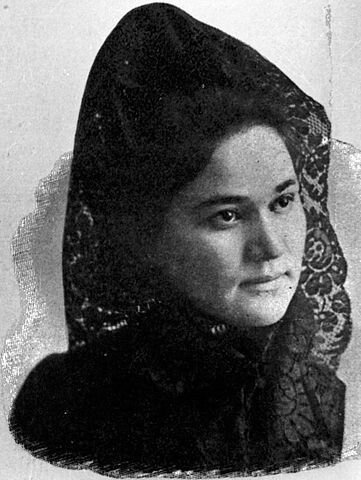
Meanwhile, the people of Arizona were experiencing a slightly darker kind of fairy tale. Homesteads lay abandoned across the territory, as hundreds of settlers fled the evil baron terrorizing the area. Even wealthy mine owners and railway tycoons were forced to pay tribute to the Baron, while his hired thugs fanned out across Arizona, demanding protection money from everyone in their path. Those who refused were often brutally beaten, or forced to watch while their homes were torched. Newspapers that tried to stand up to the Baron could expect to have their printing presses smashed to pieces, possibly with their editor’s face. Before long, most of the territory lived in fear of the Baron, who ruled from a magnificent palace built near the stunning Native American ruins outside Casa Grande.
Don't Miss
Back in California, Sofia had been sent to a fancy finishing school, where she learned to behave like the perfect Spanish noblewoman. We’d say this involved a wacky Princess Diaries-style makeover montage, but the school was run by nuns, so it was probably more like the training scenes in Full Metal Jacket. In any case, Sofia graduated at age 18 and promptly got married -- to none other than James Reavis himself, who had been effectively grooming her since they met on the train three years earlier. The new Dona Sofia Peralta-Reavis relocated to Arizona, where she moved into her husband’s magnificent palace outside Casa Grande…hey, wait a minute!

Yes, as it turned out, James Reavis and the notorious Baron of Arizona were one and the same. And Sofia was merely one cog in his catastrophic plan to turn a huge chunk of the state into his own private kingdom. As his scheme progressed, Reavis would pull off the single greatest long con in American history, spending more than a decade creeping around dusty archives in Mexico and Spain, laying the groundwork for his heist. The goal of which was nothing less than the theft of 20,000 square miles of modern Arizona. Now that sounds like some Carmen Sandiego shit, but Reavis came surprisingly close to pulling it off. And the distinguished “Peralta family” was key to the whole thing.
According to the story Reavis told Sofia, she was the great-granddaughter of Don Miguel Nemecio Gomez de Suva de Peralta y Garcia de la Cordoba (a name so long he was 35 by the time his christening wrapped up). In 1742, Don Miguel was sent on a top-secret mission to Mexico by his distant cousin, King Philip V of Spain. Officially he was there to sort out some financial problems, but his real purpose was apparently to report on Jesuit activities in the territory. His reports confirmed that the Jesuits were indeed showing disturbing signs of independence from the crown, and the order was expelled from the Spanish Empire in 1767. As a reward for his good work in Mexico, Don Miguel was appointed Baron of Arizona and given 300 square leagues of land in the area then known as “Pimería Alta.”

Don Miguel visited his new barony exactly once, then hightailed it back to civilization as fast as the nearest rattlesnake could carry him. He subsequently passed away at the ripe old age of 116, which was especially impressive in an era where you had to beat your drinking water with a special club. Seriously, we’re talking about a time when arsenic was considered a tasty snack and you had to drink a gallon of wine for breakfast to stop your tapeworms from getting the shakes. And yet Don Miguel lived so long he had his only child at age 73 and still lived to see the kid get his first gray hairs. We’d say it was impressive -- if he was real.
As it turned out, Don Miguel never existed. Nor did his son, Miguel the Younger. Nor did his granddaughter, who supposedly died giving birth to Sofia. The entire birth and death records of the Peralta family were fake. So were the references to them in numerous Spanish royal documents and the old poems exalting the brave deeds of the family. Even the treasured family portraits that Reavis “tracked down” and gave to Sofia were really just random paintings sourced from Spanish antique dealers. The ancient and noble Peralta family was in fact entirely fictional, created from scratch by Reavis in the single greatest forgery in American history.
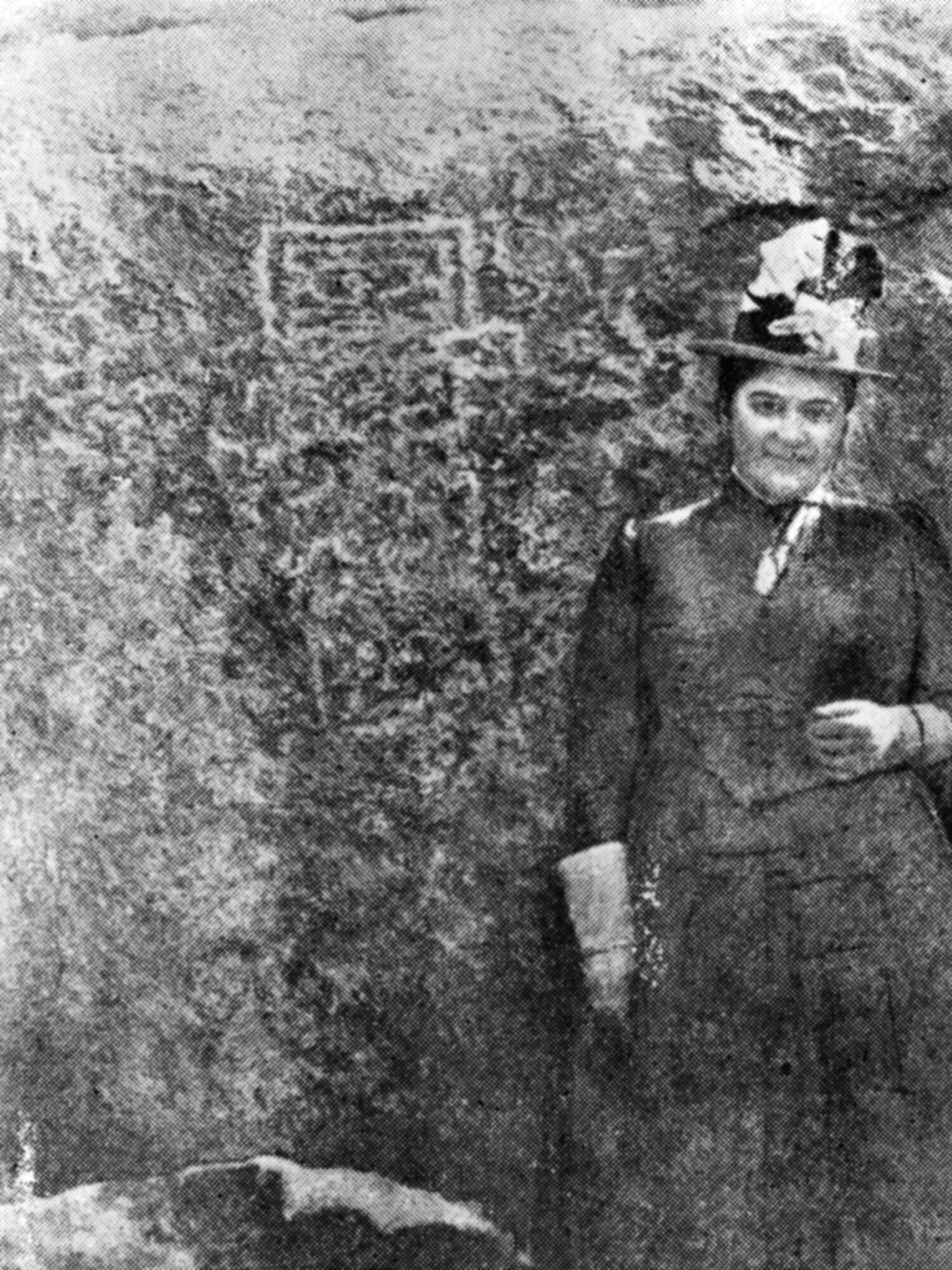
It’s impossible to overstate how much work Reavis put into this. Like we said earlier, he actually wrote poetry referencing the Peraltas in courtly 18th century Spanish and inserted it into a Seville archive, just so there would be cultural as well as legal evidence of the family’s existence. There were isolated churches in the American southwest whose baptismal registers contained brief references to the Peraltas, which were actually created by Reavis erasing real names and inserting fake Peraltas in their place (he did get a little lazy when he decided to save on making up a generation and just had Don Miguel have his son at the age most turtles are considering retirement). But just what was the point of all this? Well, to understand that, we have to go back to one of America’s most controversial wars.
The Mexican-American War broke out in 1846, when the Mexicans brutally opened fire on some American soldiers, who were innocently dressed as cartoon ducks and bobbing up and down in a carnival shooting gallery as part of Operation Get Some Soldiers Shot To Justify A War With Mexico. Two years later, the defeated Mexicans were forced to sign the Treaty of Guadalupe Hidalgo, which ceded approximately half their country’s land to the United States. They probably would have lost even more if a senior American diplomat hadn’t gone rogue and negotiated the treaty despite the fact that President James Polk had recalled him fully two months earlier (which was the kind of thing you could get away with in the wonderful era before email).

With Guadalupe-Hidalgo begrudgingly ratified by Congress, the United States officially took control of a vast area that included most of modern-day California, New Mexico and Arizona. To reassure their new citizens, the Americans had included a clause in the treaty agreeing that all existing land grants in the area would be recognized. With their property rights ensured, the people of Arizona resumed their normal everyday activities (trying to build organic air conditioners out of gila monster bones) and remained undisturbed until the 1870s, when James Reavis arrived on the scene.
Reavis had scammed his way through the Civil War, serving in both the Union and Confederate armies while raking in cash selling forged camp passes and other military documents. After the war, he moved to St. Louis, where he developed a new business selling fake real estate documents. It was here that he learned of the rich opportunities for a forger in the newly-conquered southwest, where the government was required to authenticate land grants made by various Spanish monarchs, a short-lived Mexican Emperor, and several dozen republican presidents and military strongmen. Since this was the era when authentifying a document meant squinting at it really hard, the process soon devolved into a scammers paradise.
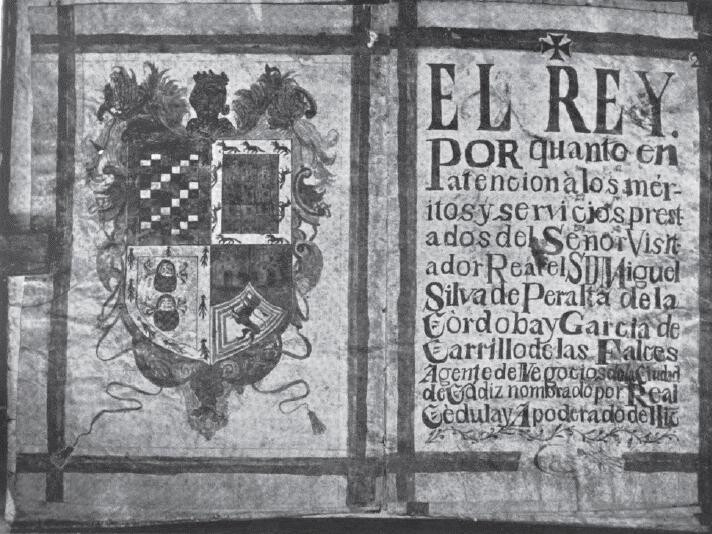
Reavis hit this scene like a blue whale at a krill convention. While other forgers were content to claim ownership of a nice new scorpion farm, Reavis was after the whole ecosystem. His phony land claims started at 20,000 square miles and eventually got even bigger, until they encompassed an area bigger than New Jersey and New Hampshire combined. To justify such a huge claim, Reavis knew that he would need more than just a phony deed. That’s when he came up with Don Miguel, a nobleman whose service to the Spanish crown more than justified such a huge grant. By 1874, Reavis had graduated from forging camp passes to mastering courtly Spanish and smuggling fabricated royal decrees into Mexican archives.
In 1883. Reavis finally felt ready to strike. That year, he marched into the surveyor-general’s office in Tucson and presented his claim. The officials there were inclined to laugh in his face. According to Reavis, he was the proud owner of a vast area of central Arizona (by manipulating the definition of the word “league” he eventually extended this to an area 75 miles long and 225 miles wide). But as they examined his documents, their amusement turned to alarm. James Reavis had assembled one of the most compelling cases ever brought before the office. And archival checks just confirmed his story further. As far as anyone could tell, this random former soldier was now the largest individual landowner in the United States.
With the government stunned, Reavis wasted no time in raking in the cash. In the years since The Mexican-American War, a new wave of settlers had moved to the Southwest. But Reavis’s earlier claim technically invalidated all land grants and sales in the area. He promptly hired an army of mercenaries and gunslingers and sent them out through his new barony, forcing locals to pay to repurchase their own land (the actual amount demanded varied from thousands of dollars to the cost of a round of drinks, depending on the mood of the goon involved). Those who refused faced violent retribution. Even the most powerful businessmen in the territory weren’t immune -- the Silver King mining company stumped up $25,000, while the Southern Pacific Railroad was forced to hand over $50,000. Which in today’s money would be…all of it. All of the money.

U.S. Mint
There was just one hole in the story. According to Reavis, he had inherited the land from a guy named George Willing, who had supposedly bumped into Don Miguel the Younger in an isolated mining camp in 1864. Inexplicably broke, Don Miguel had traded the Peralta Grant in return for a few mule loads of supplies. After scouring the camp for a piece of paper, they had written the contract on the back of an old invoice, with a couple of drunken miners as witnesses. When Willing mysteriously died in 1874, ownership passed to his good friend James Reavis. This was hardly the most convincing story and Reavis’s growing list of enemies attacked it like velociraptors. What they didn’t realize was that Reavis was leading them into a trap.
The whole time Reavis was terrorizing Arizona, he was secretly putting Sofia through finishing school. With his claim about to fall apart, he suddenly unveiled his new Peralta wife -- who would be heir to the estate if the Willing contract was ruled invalid. Either way, he would win. With the anti-baronial faction in disarray, many settlers either fled the territory or gave up and paid Reavis to keep their land.
Sofia knew nothing of any of these schemes. She was just enjoying her elegant new life. The couple relocated to New York (Reavis was worried about gun-toting Arizona vigilantes who had sworn to end his reign of terror). The couple hobnobbed with the Astors and Vanderbilts, while Reavis pitched ambitious plans to fill his new territory with dams, mines and factories. Having raised a fortune from East Coast investors, the couple promptly blew it on a lavish trip to Europe, where the “Baron and Baroness” were feted by Spanish royalty and attended Queen Victoria’s Golden Jubilee celebrations (Reavis also used the opportunity to slip even more forged Peralta documents into various Spanish archives).
From Casa Grande To The Big House
By the time the Reavis-Peraltas returned to the US, it seemed like nothing could stop them. Reavis’s Casa Grande Improvement Corporation had sold 500,000 shares in his new empire. They had been greeted as equals by New York’s high society and European nobility and their claim to the barony was commonly held to be ironclad. Arizona newspapers had given up on finding any legal way to stop the Baron and were instead openly advocating his assassination. In fact, things were going so well that other Peralta claimants came out of the woodwork and filed a class-action lawsuit claiming they were also descended from the (fictional) Don Miguel and demanding their share of the pie.
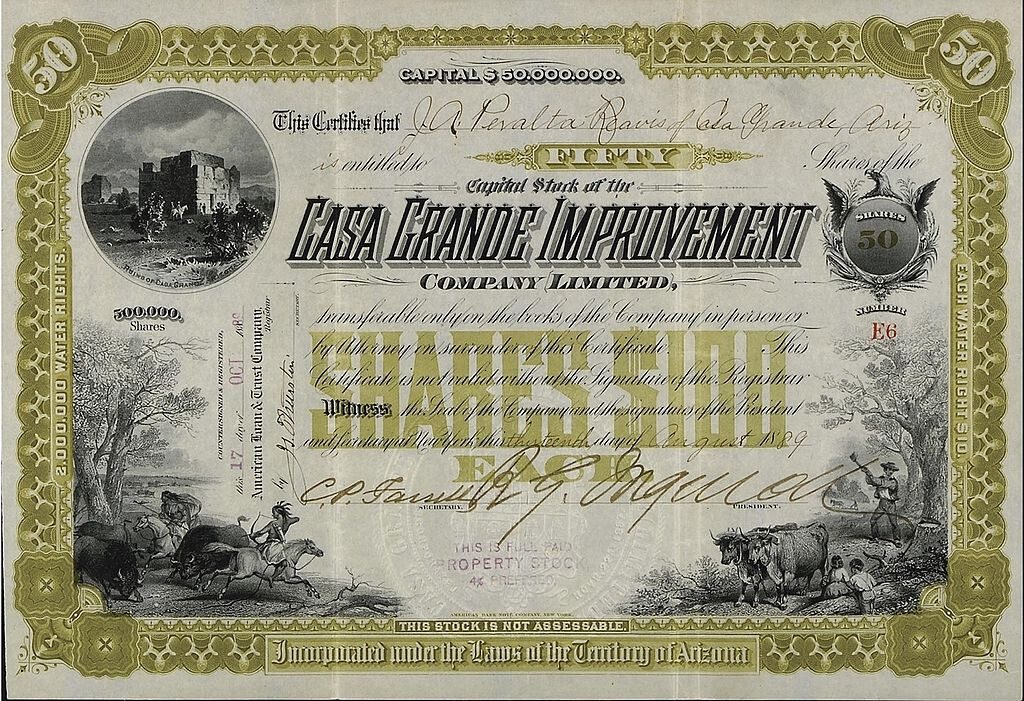
But what Reavis didn’t know was that the US government had secretly undertaken one of the biggest anti-fraud operations of the 19th century. Lawyers fanned out between California, Mexico and Spain, searching for any loose thread that would unravel the Peralta claim. Part of the problem was that they couldn’t imagine the scale of Reavis’s scam -- it was suspected that he was exaggerating the size of the barony or fabricating his claim to it, but nobody could conceive that the entire Peralta family, with its noble lineage and host of family heirlooms, had been created entirely out of thin air.
But bit by bit, the lawyers started to discover the holes in the story. In Spain, they learned that Reavis had been caught tampering with documents in Seville, but had leaned on his royal connections to avoid prosecution. In California, they visited the tiny church where Sofia had supposedly been born and discovered a second register of births, which clearly showed the first register had been tampered with. The most devastating news came from Guadalajara, where the original royal decree establishing the Barony of Arizona was supposedly kept. The lawyers found Reavis’s forged decree all right, but the archive records revealed he had simply altered a different royal decree that originally announced a change in governor.
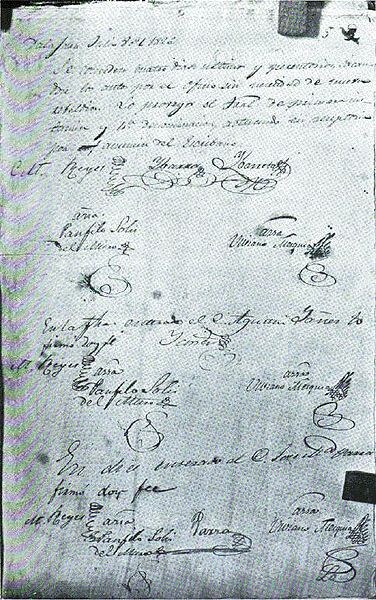
The evidence started to snowball. Supposed historical documents turned out to have been written with a modern pen, or on paper bearing a modern watermark. Witnesses came forward to say that Reavis had offered them thousands of dollars to lie under oath. In 1889, the Arizona surveyor-general released an official report concluding that the Barony of Arizona was a massive fraud by James Reavis. Who responded by suing the government for $11 million dollars. Which is kind of like suing the bank because their alarm system hurt your ears while you were sprinting out the door with an entire ATM strapped to your back.
The resulting court case was one of the most brutally one-sided legal beatdowns since the Anti-Slavery Commission vs Wonka. The government completely dismantled the “Baron’s” fabrications, while Reavis, who had inexplicably chosen to represent himself, presented a defense that consisted mostly of stammering and eyeing up various exits. The man who had terrorized Arizona for the best part of a decade ended up serving two years in prison. He died shortly after being released. As for Sofia, she promptly left her scammer husband and spent the rest of her life in poverty. And that is why you don’t accept marriage proposals from strangers you met on public transport.
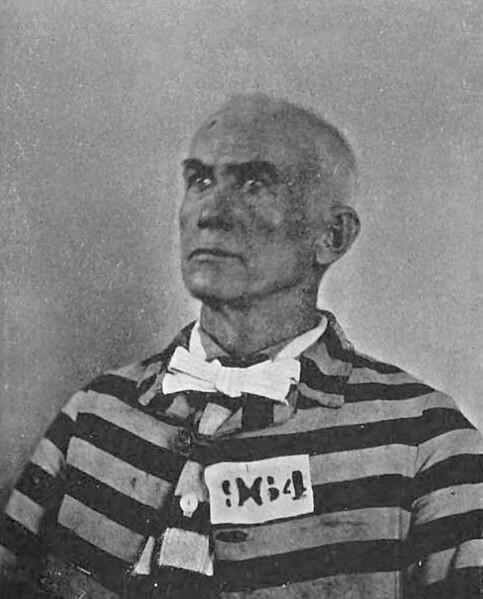
Top image: Brent Coulter/Shutterstock